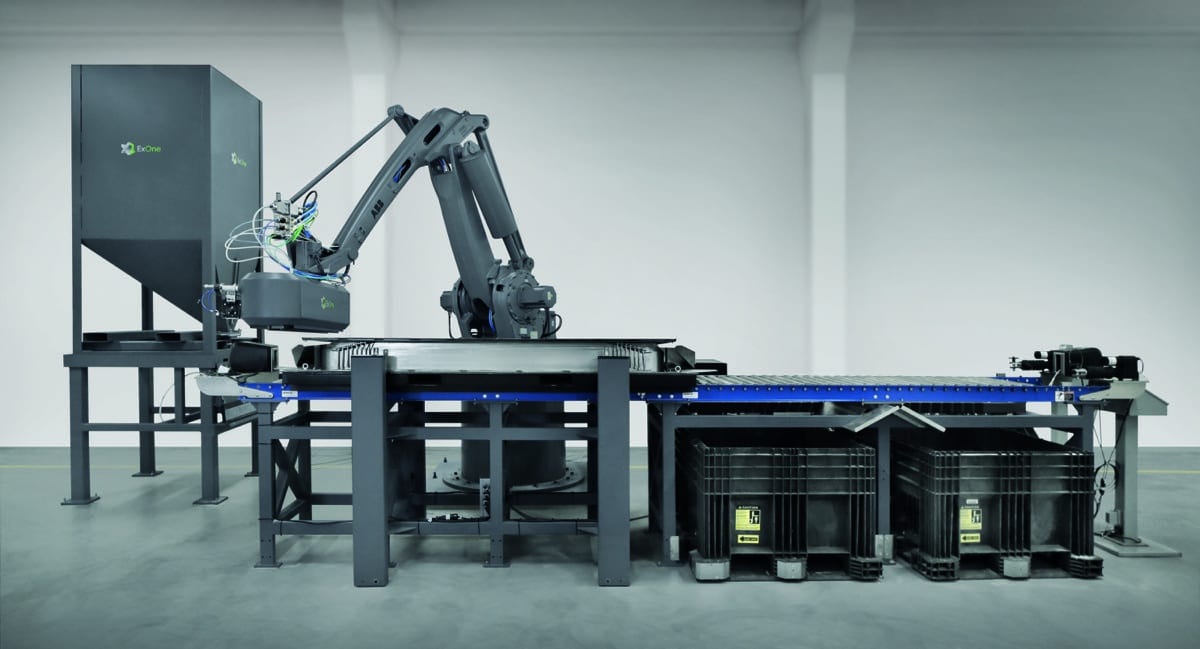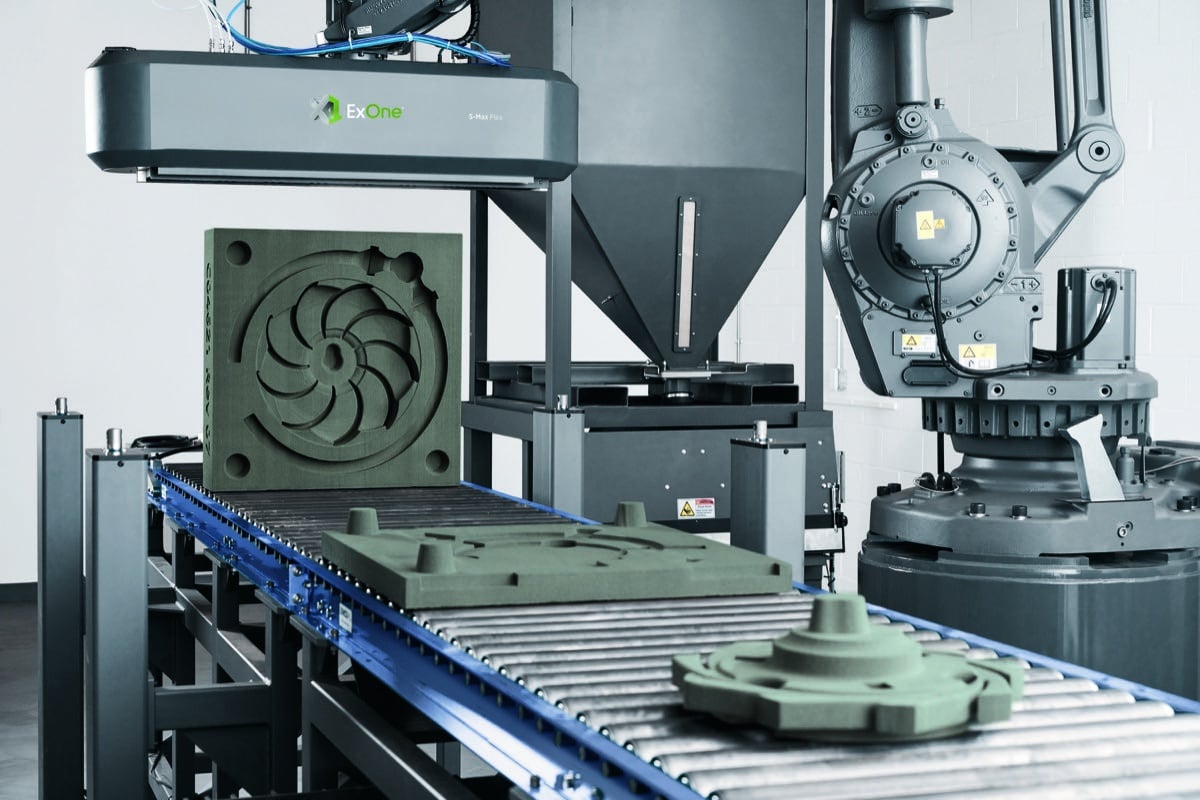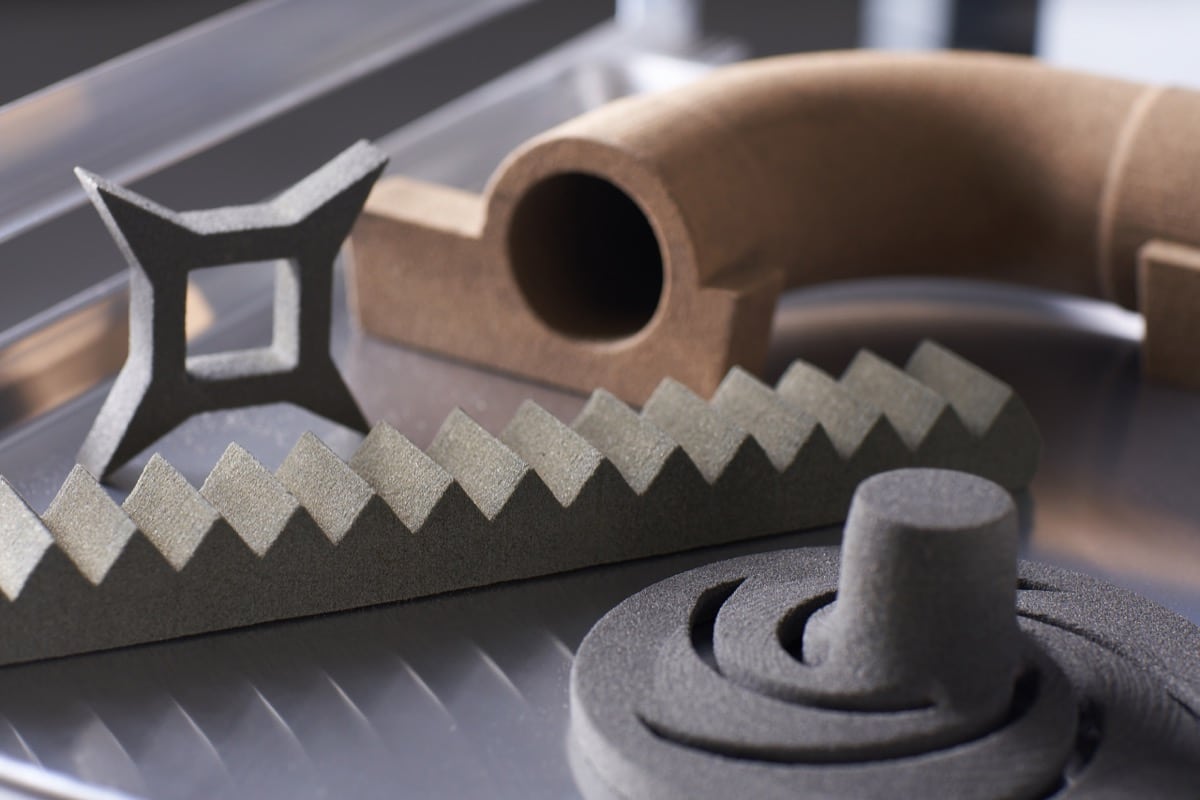After an early reveal last March, Desktop Metal (NYSE: DM) officially introduced the new ExOne S-Max Flex, a scalable, large-format binder jetting system that 3D prints sand tooling, which foundries use to quickly cast complex metal designs for the aerospace, automotive, and energy industries, among others.
ExOne, which was acquired by Desktop Metal in late 2021, is the leading digital sand printing solution provider for foundries. The new S-Max Flex combines ExOne’s sand printing expertise in process and materials with proprietary Desktop Metal SPJ technology in an affordable architecture to deliver new value to foundries that have long wanted an S-Max but found the premium price out of reach. The robotic architecture is similar to that developed by Viridis, a company that was acquired by EnvisionTEC which was in turn acquired by Desktop Metal (and rebranded to ETEC).
The S-Max Flex pairs an affordable industrial robot with an all-new end effector printhead design that deposits binder into a 1900 x 1000 x 1000 mm (74 x 39 x 39 in) telescoping build box that grows as the parts are built layer by layer. Additional build box sizes are available up to 4700 x 1000 x 1000 mm (185 x 39 x 39 in), with taller versions available up to 1000 x 2500 x 2400 mm (39 x 98 x 94 in).
The S-Max Flex will debut at CastExpo 2022, North America’s largest metalcasting trade show, going on from April 23rd to the 26th in Columbus, Ohio. “To achieve our vision of Additive Manufacturing 2.0, we need to make production 3D printing practical in terms of speed, cost, and material availability for a broad range of applications,” said Ric Fulop, Co-Founder and CEO of Desktop Metal. “We designed the all-new S-Max Flex from the ground up leveraging SPJ technology with the idea of making premium sand 3D printing accessible to every foundry, so that more companies can take advantage of the benefits of AM 2.0, such as distributed, local production, and remain competitive for the long term.”
Manufacturing on Demand
The S-Max Flex comes to market at a time of strong demand for castings, along with challenges finding labor. After years of contraction, the U.S. metal casting industry is experiencing growth as a result of supply chain changes related to the COVID-19 pandemic. A recent survey released by the American Foundry Society shows that 90 percent of responding North American foundries have a positive business outlook and anticipate making capital investments in the next 12 months, including of 3D printers.
Desktop Metal’s high throughput SPJ technology delivers a build rate up to 115 l/h, which offers foundries quick and reliable production to operate more efficiently in times of ongoing labor shortages, as well as a faster return on investment. The S-Max Flex joins the premium S-Max and S-Max Pro solutions that are used in foundries worldwide.
The all-new S-Max Flex prints standard silica sand with furan binders and delivers final parts with dimensional accuracy of +/- 0.5 mm. The system comes with several accessories and safety features that are configurable to fit a variety of spaces.
Industries beyond metalcasting are also set to take advantage of the S-Max Flex’s large form factor and ability to binder jet a variety of powders. Infiltrated sand tooling for plastic thermoforming, composite layup, and sacrificial tooling applications are printed today on S-Max machines, along with infiltrated sand consumer products, such as those offered by Sandhelden and Deeptime. Desktop Metal’s Forust brand, which upcycles byproducts of the wood waste stream into consumer designs, will also leverage the new system to print large form factor wood parts at scale cost-effectively. Additional projects are underway printing reclaimed concrete and other materials.
Binder jet 3D printing is widely regarded as the fastest additive manufacturing method for the mass production of functional precision parts. Sand binder jet 3D printing has been used in foundries for more than two decades to create metalcasting tooling cost-effectively and with low turnaround times.
* This article is reprinted from 3D Printing Media Network. If you are involved in infringement, please contact us to delete it.
Author: 3D Printing Media Network




Leave A Comment